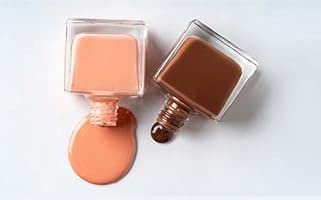Product Description: Die casting is a metal
casting process that is characterized by
forcing molten metal under high pressure into
a mold cavity. The mold cavity is created using two
hardened tool steel dies which have been machined
into shape and work similarly to an injection mold during
the process. Most die castings are made from non-ferrous
metals,
specifically zinc, copper, aluminium, magnesium, lead, pewter,
and tin-based alloys. Depending on the type of metal being
cast, a hot- or cold-chamber machine is used.The casting equipment
and the metal dies represent large capital costs and this tends to
limit the process to high-volume production. Manufacture of parts
using die casting is relatively simple, involving only four main
steps, which keeps the incremental cost per item low. It is
especially suited for a large quantity of small- to medium-sized
castings, which is why die casting produces more castings than any
other casting process.[1] Die castings are characterized by a
very good surface finish (by casting standards) and
dimensional consistency. Product
Specifications: Material:Aluminum, A380, A356, ADC12,
AlSi10Mg, 104, 102 etc.Dimension:According to the drawing or
sampleStandard:DIN GB ISO JIS BA ANSICasting
equipment:80T/160T/250T/300T/500Tcasting machine,Sand blasting
machine,5T electri stove,Metallographic detector,Independent mould
manufacturingProduction Process:Polish/Sand
Blast/EDM/Milling/Texture/Grind/Pre-Treatment/Quenching/Lathe/Wire
Cut/Annealing/Temper etc.Equipment of Casting:1. High pressure die
casting machining:125T/180T/250T/280T/500T/800T/1250T2. Gravity
casting machine: 5 production lines3. Low pressure die casting
machining: 1 production line4. Sand casting machine: 6 production
lines5. Degassing equipment and opportunities to refine the
material6. Machining: 5Sets CNC Machines;3 sets Milling machines; 3
setsTurning machines; 10 sets drill and tap machinesDie and
component material and hardness for various cast metals Die
componentCast metalTin, lead & zincAluminium & magnesiumCopper &
brassMaterialHardnessMaterialHardnessMaterialHardnessCavity
insertsP20290-330 HBH1342-48 HRCDIN 1.236738-44
HRCH1146-50 HRCH1142-48 HRCH20, H21, H2244-48 HRCH1346-50
HRC CoresH1346-52 HRCH1344-48 HRCDIN
1.236740-46 HRC DIN 1.236742-48 HRC Core
pinsH1348-52 HRCDIN 1.2367 prehard37-40 HRCDIN 1.2367
prehard37-40 HRCSprue partsH1348-52 HRCH13DIN 1.236746-48 HRC44-46
HRCDIN 1.236742-46 HRCNozzle42040-44 HRCH1342-48 HRCDIN
1.2367H1340-44 HRC42-48 HRCEjector pinsH1346-50 HRCH1346-50
HRCH1346-50 HRCPlunger shot sleeveH1346-50 HRCH13DIN 1.236742-48
HRC42-48 HRCDIN 1.2367H1342-46 HRC42-46 HRCHolder block4140
prehard~300 HB4140 prehard~300 HB4140 prehard~300 HBAdvantages and
disadvantages: Excellent dimensional accuracy (dependent on
casting material, but typically 0.1 mm for the first
2.5 cm (0.004 inch for the first inch) and 0.02 mm
for each additional centimeter (0.002 inch for each additional
inch).Smooth cast surfaces (Ra 1-2.5 micrometres or 0.04-0.10
thou rms).Thinner walls can be cast as compared to sand and
permanent mold casting (approximately 0.75 mm or
0.030 in).Inserts can be cast-in (such as threaded inserts,
heating elements, and high strength bearing surfaces).Reduces or
eliminates secondary machining operations.Rapid production
rates.Casting tensile strength as high as 415 megapascals
(60 ksi).Casting of low fluidity metals.The main disadvantage
to die casting is the very high capital cost. Both the casting
equipment required and the dies and related components are very
costly, as compared to most other casting processes. Therefore, to
make die casting an economic process, a large production volume is
needed. Other disadvantages are that the process is limited to
high-fluidity metals, and casting weights must be between
30 grams (1 oz) and 10 kg (20 lb).[note
3][10] In the standard die casting process the final casting
will have a small amount of porosity. This prevents any heat
treating or welding, because the heat causes the gas in the pores
to expand, which causes micro-cracks inside the part and
exfoliation of the surface.[4] Thus a related disadvantage of
die casting is that it is only for parts in which softness is
acceptable. Parts needing hardening (through hardening
or case hardening) and tempering are not cast in
dies.Why choices us? In China, we have more than 13 years of
experience in processing foreign companies for foreign
companies.China manufacturer in Qingdao,not trade
companyCompetitive price and nice serviceISO/SGS passedApplication:
Automotive,medical device, electronics, toy, furniture, industrial
etc.Our Products:1. auto parts, classic car parts2. machine parts,
pump body housing, engine parts, cylinders, pistons, transmission
housing.3. cookware parts, kitchen ware parts.4. medical equipment
parts, housing, instrument housing, I beam, housing...etc. 5.
Bicycle and motocycle parts, sport equipment parts, housings,
covers, heat sinks.Our Policy:Innovation
Related products about Customized Metal Mold Casting Die Cast Cars Parts
-
 Waste Tyre Plastic Recycling Machinery Machine Tire Crusher Production Line Rubber Crumb Grinding Machine Equipment Tire Shredder
Waste Tyre Plastic Recycling Machinery Machine Tire Crusher Production Line Rubber Crumb Grinding Machine Equipment Tire Shredder
-
 Stretch Plastic Blowing Pet Bottle Making Blow Molding Machine Bottles Stretch Automatic Pet Bottle Blowing Machine
Stretch Plastic Blowing Pet Bottle Making Blow Molding Machine Bottles Stretch Automatic Pet Bottle Blowing Machine
-
 Waste Plastic Pet Bottle, Water Bottle Flake, PP/HDPE/LDPE PE Film Jumbo Woven Bags Plastic Crusher Machine, Plastic Crushing Washing Recycling Machine
Waste Plastic Pet Bottle, Water Bottle Flake, PP/HDPE/LDPE PE Film Jumbo Woven Bags Plastic Crusher Machine, Plastic Crushing Washing Recycling Machine
-
 Type 2 Wall-Mounted Electric Car Charging Station 7kw /11 Kwelectric Vehicle Charging Station Home Wallbox AC EV Charger Single Phase or 3three Phase
Type 2 Wall-Mounted Electric Car Charging Station 7kw /11 Kwelectric Vehicle Charging Station Home Wallbox AC EV Charger Single Phase or 3three Phase
-
 G-View G12W Wholesale Auto Car LED Headlight Bulb High Power H13 H11 9005 H7 H4 Car LED Headlights LED Car Lights
G-View G12W Wholesale Auto Car LED Headlight Bulb High Power H13 H11 9005 H7 H4 Car LED Headlights LED Car Lights
-
 New Design Porcelain Round Plates Dinner Set for Wedding and Banquet
New Design Porcelain Round Plates Dinner Set for Wedding and Banquet
-
 China 2023 New Design Super Soft 100% Polyester Microfiber Knitted Oversized Decoration Hoodie Blanket
China 2023 New Design Super Soft 100% Polyester Microfiber Knitted Oversized Decoration Hoodie Blanket
-
 Handmade Art Creative Materials Thickened White Paper Cup DIY Disposable Handmade Colored Paper Cup
Handmade Art Creative Materials Thickened White Paper Cup DIY Disposable Handmade Colored Paper Cup






